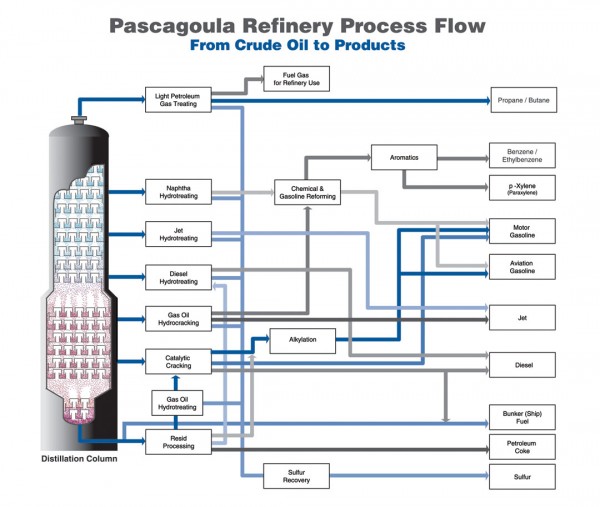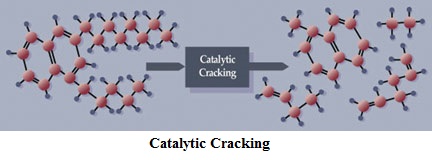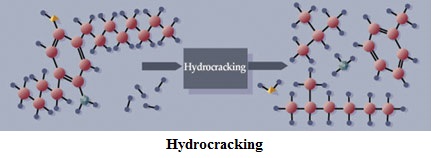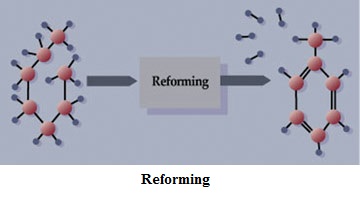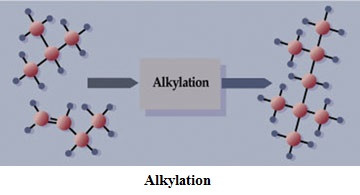Is there any doubt we live in an oil-based economy? With so much ongoing discussion about the price of oil, increasing refinery costs and concerns of availability going forward, this is one subject that has been discussed at some length. In fact, it is hard to tune out even if one grows tired of hearing it. Even though hurricane Katrina’s damaging effects have been repaired and most refinery operations are back to full production, the refining and processing of crude oil continues to be a hot topic of interest, especially when you examine the refinery process and realize that America supplies only 40 percent of its own oil.
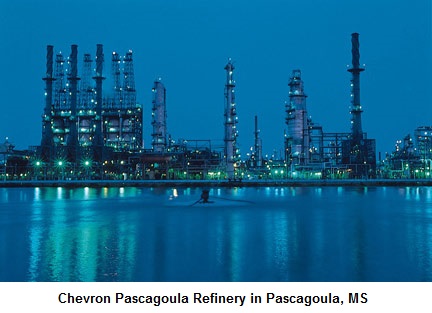 An oil refinery such as Chevron’s Pascagoula, Mississippi factory, can process crude oil at the rate of 330,000 barrels per day. According to Chevron, that is an amount “equivalent to the size of a football field covered to a depth of 41 feet.” Modern refineries can transform just over half of every 42 gallon-barrel of crude oil into gasoline; a remarkable technological improvement over years ago, when only 11 gallons of gasoline could be produced from one barrel. The yield of gasoline from crude is dependent upon many factors, including the quality of the crude, efficiency of the refinery, and product mix desired. The by-products or “rest of the barrel” have many uses and can be sold for further processing. Products such as ammonia, fertilizer, life-preservers, guitar strings, bubble-gum and mascara all get their start in a refinery.
An oil refinery such as Chevron’s Pascagoula, Mississippi factory, can process crude oil at the rate of 330,000 barrels per day. According to Chevron, that is an amount “equivalent to the size of a football field covered to a depth of 41 feet.” Modern refineries can transform just over half of every 42 gallon-barrel of crude oil into gasoline; a remarkable technological improvement over years ago, when only 11 gallons of gasoline could be produced from one barrel. The yield of gasoline from crude is dependent upon many factors, including the quality of the crude, efficiency of the refinery, and product mix desired. The by-products or “rest of the barrel” have many uses and can be sold for further processing. Products such as ammonia, fertilizer, life-preservers, guitar strings, bubble-gum and mascara all get their start in a refinery.
Would you be surprised to learn that Chevron, America’s second-largest oil company, spends $40 million a day just looking for this stuff? With modern technology, petroleum prospecting is considerably more successful than in the past. On average, one exploratory well drilled a mile or more from existing production has a one in ten chance of striking an oil or gas field, or some “convergence of the elements.” A well drilled in an unproven area stands a 1 in 40 chance, but drilling is the only way to confirm an oil or gas field’s existence. Although today’s prospectors have extremely sophisticated tools, luck is still a factor in the search for petroleum. Once crude oil is located, a corporation mines and transports the oil and the refinery process begins. There are three basic steps in the refining process: distillation and separation, converting and combining, and reforming and treating.
Distillation and Separation
Distillation is the first phase of the refining process and involves pumping the crude oil through pipes into hot furnaces and separating light hydrocarbon molecules from heavier ones in downstream distillation towers. In Pascagoula, the refining process begins when crude oil is distilled in two large Crude Units, each with three inner distillation columns. Inside the towers, the liquids and vapors separate according to weight and boiling point. The operation involves vacuum distillation which reduces the chance of thermal decomposition which could occur if the mixture is overheated. The distillation columns operate at different pressures and include heat pressure, much like a vacuum, which allows the lighter materials such as propane and butane to vaporize and rise to the top of the column. Medium or slightly heavier materials condense in the middle. The heaviest materials condense in the lower portion and are called residuum, also referred to as the “bottom of the barrel” because it never really rises. The latest electronic technology allows refinery operators to precisely control the temperatures in the distillation columns which are designed with pipes to remove the byproducts resulting from the distillation process. The byproducts from each layer then travel to different plants for further refining.
Converting and Combining
An oil company’s competitive edge depends upon how efficiently they can convert the crude oil’s middle distillate gas-oil and residuum into the highest value products. The Pascagoula Refinery converts middle distillate and residuum into primary gasoline fuel (to name one) by using other processing plants that “crack” large, heavy molecules into smaller, lighter ones. The Fluid Catalytic Cracker (FCC) uses high temperature and other catalysts to crack 63,000 barrels (2.6 million gallons) each day of heavy gas-oil, mostly into gasoline. Hydrocracking uses catalysts to react gas-oil and hydrogen under high pressure and high temperatures to make both jet fuel and gasoline. Chevron is an industry leader in using this technology to cost-effectively convert medium-heavy weight gas oils. There is also “cat cracking”, which is the basic gasoline making process and involves intense heat, low pressure and a powdered additive to accelerate the chemical reaction. Some refineries also have cokers, which use heat and only moderate pressure for conversion.
Impurities such as sulfur and nitrogen are present in the various levels of liquids and vapors and must be removed to reduce air pollution when the fuels are used. As the products from the Crude Units feed to other units, a process called hydrotreating (similar to hydrocracking but milder), removes these pollutants. Because about 80 percent of the crude oil processed by the Pascagoula refinery is the heavier oil, various treating units throughout the refinery work to remove these impurities. In Chevron’s Residuum Desulfurization Unit, they use six 1,000-ton reactors where sulfur and nitrogen are removed from the Fluid Catalytic Cracker feed stream. The sulfur is converted to hydrogen sulfide and sent to the Sulfur Unit where it is converted into elemental sulfur. The nitrogen is transformed into ammonia.
Reforming and Treating
The last and most critical step is blending or reforming of the products to produce octane-rated gasoline. Gasoline’s octane rating is a key measurement of how it will perform in an automobile’s engine, but much of the gasoline that comes from the Crude or Cracking Units does not have enough octane to burn well in cars. Gasoline is blended with treated components from several processing units. Operators of the Blending and Shipping Area carefully combine the components to ensure the blend has the correct octane level, vapor pressure rating and other important specifications. A major portion of refining involves blending, purifying, fine-tuning or improving products to meet government standards or customer specifications. The refining process has come a long way; by the time a gallon of gasoline is pumped into a car’s tank, it contains more than 200 hydrocarbons and additives. The Pascagoula refinery operates three catalytic reformers where they rearrange and change 71,000 barrels (about 3 million gallons) of gasoline per day to give it the octane rating that automobiles need.
The Energy Information Administration (EIA) states that oil resources are adequate to meet growing worldwide demand for at least the next 25 years. Although the world has produced some 650 billion barrels of oil, another trillion barrels of proved reserves have yet to be produced. There are an estimated 10 trillion barrels of oil resources that could be developed, assuming that the price of oil will someday support the increased production costs. Resources such as bitumen, shale oil and oil in existing fields are awaiting development, but may require specialized recovery methods just to mine and remove them. Combine those expenses with the additional costs needed to refine these resources, and the yield is a more costly final product which cannot be produced economically with today’s technology. According to EIA’s International Energy Outlook 2005, world oil consumption is expected to grow from 29 billion barrels per year in 2002 to 44 billion barrels per year in 2025. Under these growth assumptions, less than half of the world’s total oil resources would be exhausted by 2025. EIA forecasts that demand for petroleum products will continue to exceed domestic refinery production over the next ten years – further increasing our reliance on imports. Based on publicly available data on announced refinery capacity expansion plans, over 1.3 million barrels per day of additional refinery capacity projects are either planned or under strong consideration for the years 2006 to 2011. Such expansions will boost domestic refining capacity to nearly 18.5 million barrels per day. (Note: this information includes only expansion plans announced to the public; additional plans may be under initial consideration or kept confidential).
Availability of Oil Resources
The demand for gasoline may someday lessen if hybrid or other vehicles less dependent on gasoline become more readily available. Although the best solution to decreased demand will be through the introduction of alternate forms of energy, because even hybrid vehicles require refined crude. Once alternate forms of energy are developed for economical widespread use, consumers will hopefully have some relief from high prices at the pumps.
For more information, visit:
www.chevron.com (The World of Chevron)
www.eia.doe.gov (Energy Information Administration)
By Tina Crowe,
Automation Notebook Publisher
Originally Published: June 1, 2006


